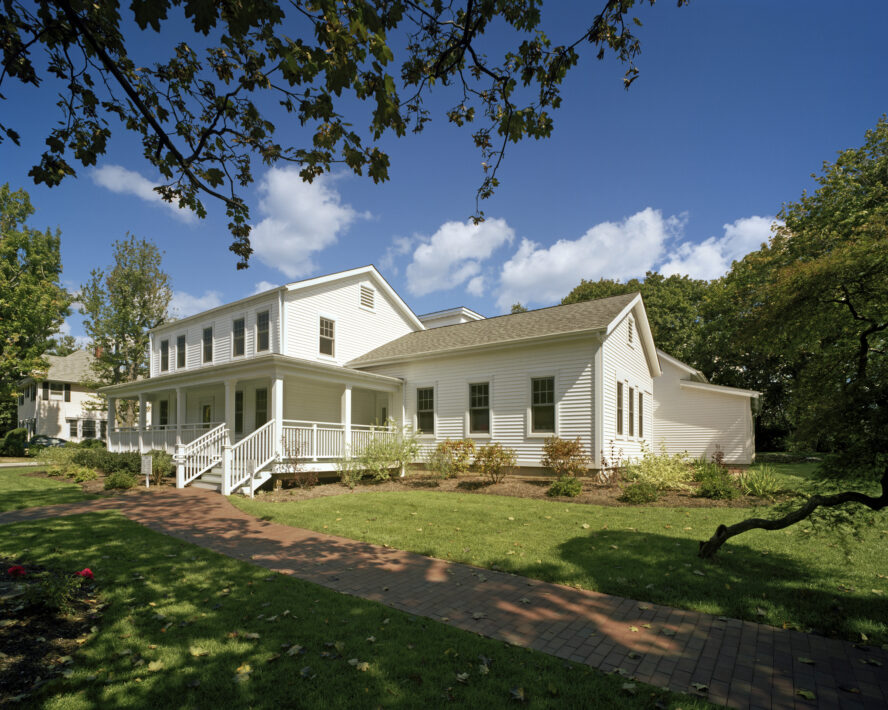The Ferguson Library converted an old 1830s farmhouse into its Weed Memorial & Hollander Branch in the 1950s, but the work included additions that obscured its original vernacular by removing its front porch and adding bay windows and a sunroom.
Perkins Eastman was retained to provide a full renovation and addition; the design objective was to honor the building’s original residential context while bringing it into the 21st century. The aesthetic is inspired by the American farm typology, in which buildings are constructed over time, and then connected together without losing the integrity of each building’s use. Programmatically, this organization allows growth while maintaining distinct and intimate functional clusters. A children’s wing with room for story hours and a homework club, for example, is separate from a teen area, and rooms conducive for weekend activities are away from the library’s general circulation.
The reintroduction of a porch restores the structure’s welcoming gesture to the “main street” of the neighborhood. And to complement the exterior farmhouse vocabulary, the interiors feature open wood trusses in the new children’s area and custom millwork throughout.





